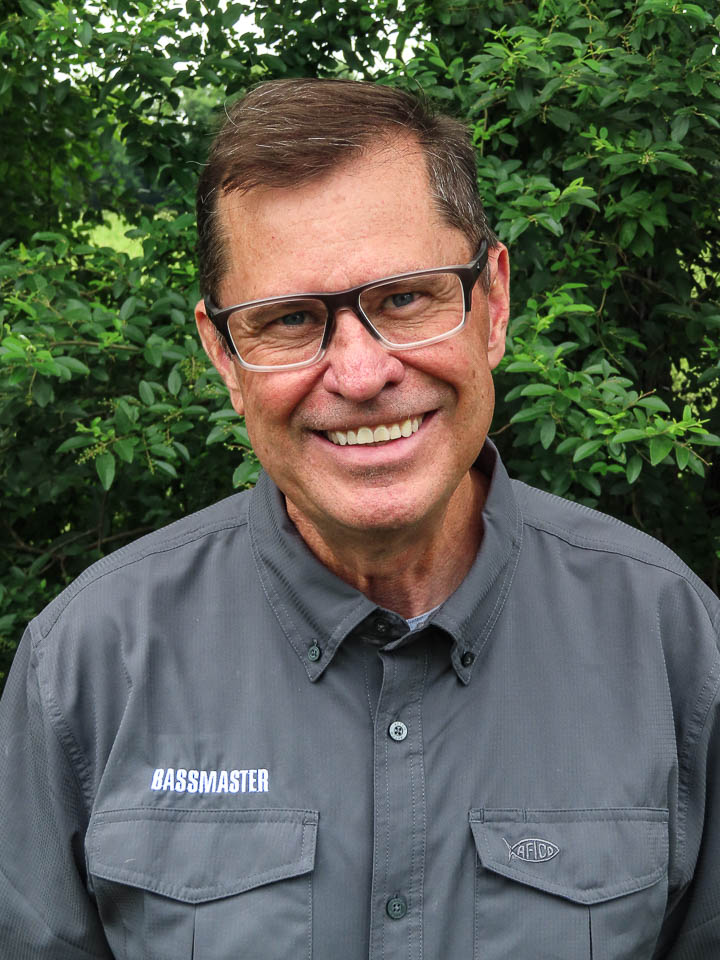
Call 2020 whatever you want, but with the Bassmaster Elite Series it was the year of the drop shot. Normally confined to use on the Northern Swing, where smallmouth is the quarry, the drop shot proved its versatility in some unlikely places.
That happened at Santee Cooper, the land of cypress tree forests and gnarly backwater swamps more suited for winching in largemouth with big reels, stout rods and big baits. On Championship Sunday, Brandon Palaniuk called an audible and made a game-changing move that earned him a second blue trophy of the season. Fishing in shallow water filled with submerged trees and brush, he pulled out the very same drop-shop setup that won for him on Lake Champlain. This time, a 7-pound, 2-ounce largemouth took the bait, rigged on light spinning tackle with 10-pound line.
That was just one notable circumstance in which the pros taught us all how to catch more and bigger bass, using baits in places and with techniques we’d never think of using them.

Drop shots appeared 25 times in the top lure galleries during the season, from the first event on the St. Johns River, to the finale at Lake Fork, of all places. Not surprisingly, the drop shot appeared the most during the New York swing, and specifically at the first event of the doubleheader. The playing field included the St. Lawrence River and Lake Ontario, giving anglers even more reason to use the drop shot in its traditional purpose of catching smallmouth suspended over offshore cover. Nearly all 10 of the anglers fishing Championship Sunday had a drop shot tied on.
A drop shot was a winning lure for Chris Johnston at the St. Lawrence River, and the next week for Palaniuk at Lake Champlain and again at Santee Cooper.
Coming in a close second was the Texas rig, which encompassed soft plastics in size ranging from the 15-inch Netbait C-Mac Worm used at Lake Fork by Lee Livesay, to the diminutive soft plastic creature baits used throughout the year. Texas-rigged baits appeared 24 times in the galleries.

The Texas rig, originally designed for straight worms, is proving itself as the utility rig for anything made of plastic. For the sake of this audit of top bait trends, we included traditional Texas-rigged worms and creature baits, with many of those setups used as “punch rigs.” Those appeared in galleries from familiar fisheries like the St. Johns River, Lake Guntersville and Santee Cooper, where Carl Jocumsen treated us to a show on Bassmaster LIVE, nearly winning the derby on his punch rig used in thickly matted vegetation.
Jigs appeared 19 times in the galleries, and we lumped swim jigs, punch jigs, flipping jigs and football variants into the same category. Designed for catching big bass, Paul Mueller used a jig to win on the St. Johns River, as did Buddy Gross at Lake Eufaula. Bill Weidler used a swim jig to help him win at Lake St. Clair.

Bladed jigs ranked fourth on the frequency list with 13 appearances in the galleries. This season, the bladed jig became the go-to bait during the Southern Swing, when the fishing was predictably very tough at Lake Guntersville, Santee Cooper and Lake Chickamauga. Coincidentally, junk fishing was in play at all three lakes, and the bladed jig proved its versatility under tough conditions. Frank Talley credited a bladed jig for his win at Lake Guntersville.
Bladed jigs have grown in popularity for their versatility, and so have soft plastic frogs, also used as a traditional topwater bait around wood cover. Talley used a frog to win at Guntersville, as did Lee Livesay at Lake Chickamauga.

Ned rigs showed up 10 times in the galleries, most notably at Lake Champlain as part of Palaniuk’s winning lure lineup. As noted by the anglers using them, Ned rigs became a follow-up bait to the drop shot as a setup to give the fish a different look.
Crankbaits appeared nine times, as did swimbaits. Buddy Gross used an underspin jig head with his winning duo of swimbaits at Lake Eufaula. Weidler used a swimbait to win at Lake St. Clair, as did Livesay at Lake Chickamauga.
After the St. Johns River event in February the season was put on hold and with it, the entire lineup of events scheduled during the spawning cycle. The season resumed with the Northern Swing, the timing of which was ideal for summertime smallmouth fishing. Times got tough during the summer swing that completed the season.
Fishing was tough, but what everyone gained in knowledge made it worthwhile. As it has for more than 50 years, the Bassmaster Tournament Trail was the source for teaching how to catch more and bigger fish, even during the toughest of seasons.





